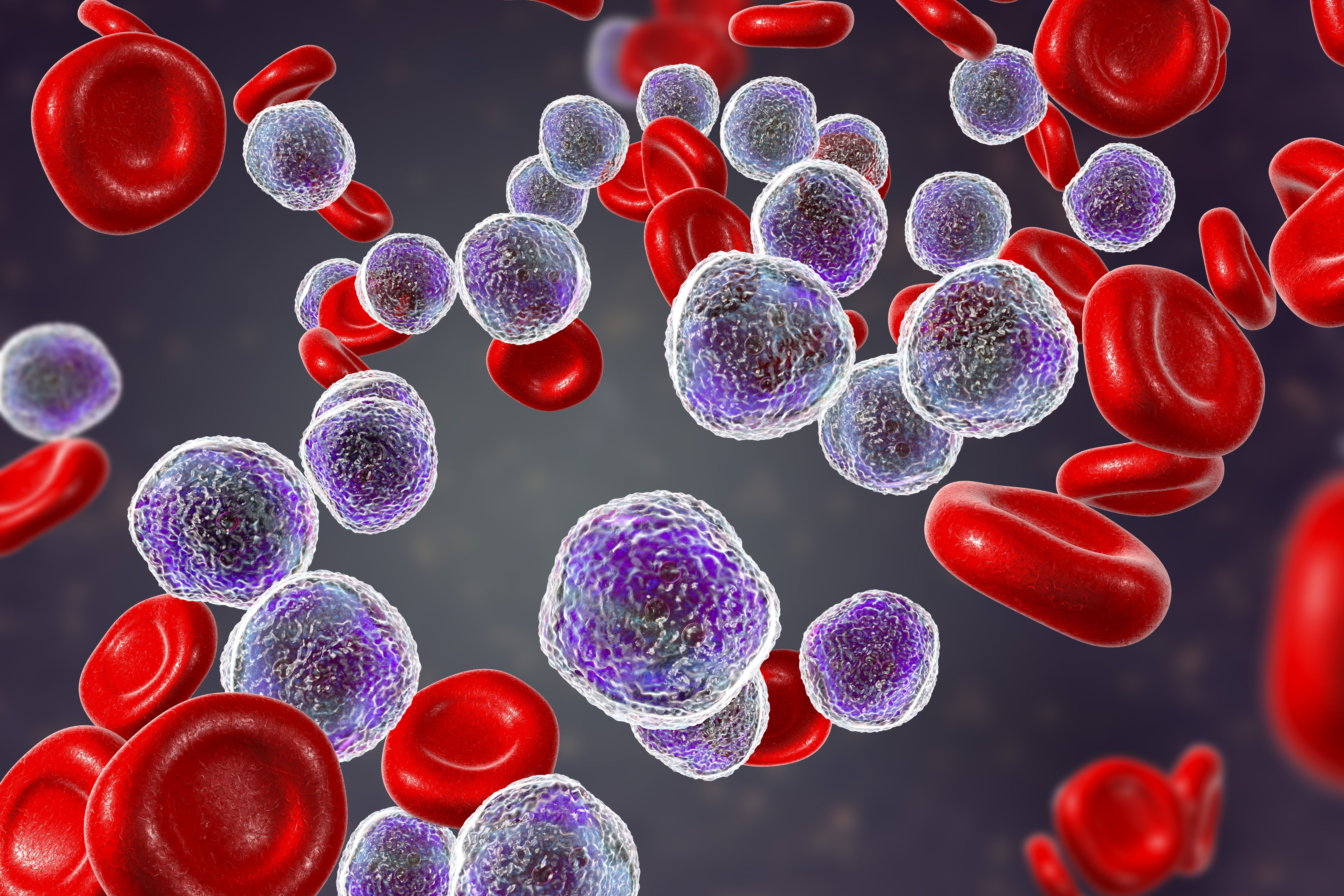Older Patients With ALL Benefit From Extended Blinatumomab Use, Study Says
SWOG 1318 results are promising for extended blinatumomab use in patients with acute lymphoblastic leukemia.

Blinatumomab (Blincyto) followed by prednisone, vincristine, 6-mercaptopurine, and methotrexate (POMP) maintenance chemotherapy showed to be tolerable and effective after 3 years in older patients with newly diagnosed Philadelphia (Ph) chromosome–negative B-acute lymphoblastic leukemia (ALL) according to the SWOG 1318 (NCT02143414) study.1
This phase 2 study enrolled 29 eligible patients. In this patient population, 66% (n = 19) of patients achieved complete remission (CR; 95% CI, 46%-82%). One patient needed two cycles of blinatumomab to achieve CR. The overall survival (OS) rate was 37% (95% CI, 20%-55%), and the 3-year disease-free survival was 37% (95% CI, 17%-57%).
Eligible patients were at least 65 years and had newly diagnosed Ph chromosome–negative B-ALL. Patients received blinatumomab for 1 to 2 cycles until complete remission (CR) or CR with incomplete count recovery (CRi) then received consolidation therapy of blinatumomab for 3 cycles. Patients then had POMP maintenance chemotherapy for 18 months. The primary end point was OS, and the secondary end points were complete response and disease-free survival (DFS). OS was measured using Kaplan-Meier.2
The median age of patients was 75 (range 66-84) years, and 76% were male. At diagnosis, patients had a median bone marrow blast count of 87% (range, 30%-100%). The baseline white blood cell count was 3.0 × 103/μL (0.3-520.8).
The median DFS for patients with poor cytogenic risk was 0.69 years vs 2.38 years for other cytogenic risk groups (P = .24). The median OS for patients with poor cytogenic risk was 1.33 years vs 2.48 years for other cytogenic risk groups (P = .19). Ten patients (34%) had poor, 16 (55%) had standard, 1 (3%) had good, and 2 (7%) had unknown cytogenic risk. Five of the 14 patients tested had Ph-like ALL gene signature.
Investigators found OS and DFS relationships among the age of patients at or beyond 75 years vs those who were younger. Median OS for patients younger than 75 years was 2.61 years (95% CI, 0.79-not reached [NR]) vs 1.94 years (95% CI, 0.28-3.63) for those 75 and older. DFS also favored those who were younger than 75 years with a median of 2.51 years (95% CI, 0.16-NR) vs 1.27 years (95% CI, 0.06-3.27) for those older than 75 years.
The most common grade 3 and 4 toxicities were hyperglycemia (14%), dyspnea (10%), febrile neutropenia (10%), hypertension (10%), and lung infection (7%). One patient developed grade 3 cytokine release syndrome, and another patient developed grade 3 neurotoxicity—both instances were considered to be related to treatment. Of the 29 enrolled patients, 10 were alive at 3 years, and 2 withdrew consent for follow-up before the 3 year window.
The OS and 3-year disease-free survival results suggest that this treatment lineup should be explored further. The estimated study completion date is June 1, 2022.2
References
1. Advani AS, Moseley A, O'Dwyer KM, et al. SWOG 1318: A Phase II Trial of Blinatumomab Followed by POMP Maintenance in Older Patients With Newly Diagnosed Philadelphia Chromosome-Negative B-Cell Acute Lymphoblastic Leukemia [published online ahead of print, 2022 Feb 14]. J Clin Oncol. 2022;JCO2101766. doi:10.1200/JCO.21.01766
2. Blinatumomab and combination chemotherapy or dasatinib, prednisone, and blinatumomab in treating older patients with acute lymphoblastic leukemia. ClinicalTrials.gov. Updated October 22, 2022. Accessed February 15, 2022. https://clinicaltrials.gov/ct2/show/record/NCT02143414?term=SWOG+1318&draw=2&rank=1